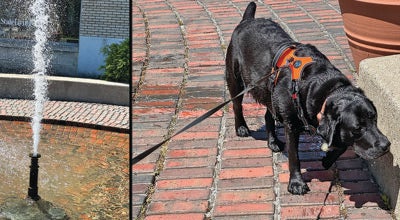EPA to test air quality at Whitwell
Published 10:19 am Wednesday, April 1, 2009
The U.S. Environmental Protection Agency announced Tuesday that it will test the air around Whitwell Elementary School to see if pollution from nearby factories and plants are a threat to students’ health.
The schoolyard testing — scheduled to begin mid-April — will sample for gases such as benzene and particulates such as hexavalent chromium, both of which are carcinogens that can lead to lung cancer, leukemia and Hodgkin lymphoma.
Manganese and manganese compounds will also be sampled. Manganese poisoning has been linked to impaired motor skills and cognitive disorders.
Testing should take about 60 days to complete and is for outdoor air around the school only.
Ironton School Superintendent Dean Nance said the selection of Whitwell was “totally random” and that he welcomes any type of testing that could improve the health of Ironton students.
“I’m very glad that (the EPA) is testing outside air qualities around our schools. Anytime we can have access to a free test like this can only benefit the safety of our children,” Nance said.
Whitwell was one of seven schools in the state selected for testing and is part of a longer list of 62 priority schools in 22 states where the EPA has identified potential health concerns from toxic air pollutants. Ohio, along with Texas, had the most schools on the list.
Schools in Warren, Marietta, East Liverpool and Wauseon were also selected. Schools were chosen because of their proximity to industrial facilities or other sources of pollution.
Three schools in neighboring Ashland, Ky. were also named. Charles Russell Elementary, Crabbe School and Hatcher School along with Cabell County Career Technology Center in Huntington, W. Va. will also have outdoor air sampled.
Monitors will be placed outside of Whitwell for 60 days to provide a sample of toxins in the outdoor air. The monitors will then sample air quality on 10 different days during that time with the data analyzed by the EPA.
Once the air toxics data collected from Whitwell are quality-assured, the EPA will then examine the results to estimate how exposure to the outdoor air around the South 5th Street school might affect the student’s health over the long-term.
Studies show school children are especially susceptible to toxic chemicals; they breathe more air in proportion to their weight than do adults while their bodies are still developing. Studies have shown that long exposures to some chemicals increase the likelihood of asthma, learning disabilities or can lead to cancer years later.
The EPA will cease monitoring at Whitwell if the results show good air quality. But if high levels of contaminants are detected, the agency will take steps to reduce the pollution.
“I think it is very important that we get results from these tests, either good or bad,” Nance said.
The results from each testing area will be made public when finalized.
EPA officials urged parents not to panic as the schools selected or the types of tests conducted do not indicate any current threats to students.
Equipment to measure wind speed and direction during the monitoring will also be installed.
Testing at Whitwell does not include indoor air quality monitoring, as no system currently exists for measuring indoor air pollutants.
A wide range of factors unique to a specific building affects indoor air quality. Factors such as types of heating, ventilation and air conditioning systems along with building design and structure all affect indoor air.
Whitwell is scheduled to close at the end of this school year because the new building will be completed for next year.
The new testing program comes from orders EPA Administrator Lisa Jackson mandated after taking over the department in January.
“As a mother, I understand that concerned parents deserve this information as quickly as we can gather and analyze it,” Jackson said. “EPA, state, and local officials are mobilizing to determine where elevated levels of toxics pose a threat, so that we can take swift action to protect our children at their schools.
The EPA said program costs would be about $2.25 million.
The Associated Press contributed to this story.




